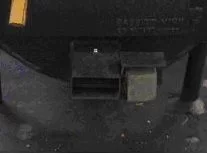Last year was the first winter in our new home. It has an lpg indoor boiler and baseboard heat. We spent over $3,000 in propane. OUCH
I searched for several months for a 500 or 1000 gallon propane tank that i could use to make an outdoor boiler.
Finally, i found this: It's a giant woodstove that is made from a propane tank. It's 3/8" thick!

In august i began building the outdoor wood furnace.
I had a 119 gallon welltrol bladder tank for a well that i picked up at auction for $20. This would serve as my firebox. It's approximately 4 feet long and 26" in diameter. I'll refer to it as "the blue tank" It is about 1/8" thickness and was rated for 150psi.
The propane tank, is about 4 inches longer and 5 inches larger in diameter than the blue tank.


I searched for several months for a 500 or 1000 gallon propane tank that i could use to make an outdoor boiler.
Finally, i found this: It's a giant woodstove that is made from a propane tank. It's 3/8" thick!
In august i began building the outdoor wood furnace.
I had a 119 gallon welltrol bladder tank for a well that i picked up at auction for $20. This would serve as my firebox. It's approximately 4 feet long and 26" in diameter. I'll refer to it as "the blue tank" It is about 1/8" thickness and was rated for 150psi.
The propane tank, is about 4 inches longer and 5 inches larger in diameter than the blue tank.
Last edited:






 A very impressive piece of "ART WORK ".
A very impressive piece of "ART WORK ". Please keep up the posts as you have a very interesting project !
Please keep up the posts as you have a very interesting project !
